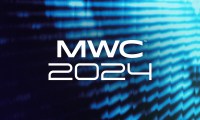Imagine climbing into a cab and sharing the precise directions for your destination through Google Maps from your phone via Wi-Fi. Once underway, you can plug your phone in to charge, and then stream video from YouTube to a screen in the back, or play your own music through the cab’s speakers. That’s exactly what RealVNC’s technology allows you to do.
In partnership with Frazer-Nash, the RealVNC platform has been implemented in the forthcoming Metrocab, a hybrid London cab that the company has been testing for last two years. The aim is to create the perfect cab for customer and cabbie alike, so the firm has been hard at work implementing feedback.
The result is an impressively roomy cab, with plenty of space for six in the back. The roof is clear, so you get panoramic views as you drive around, which is ideal for a city like London. Electric power is employed 85 percent of the time, and the range extending petrol generator actually powers up the battery, so there’s no need for a combustion engine. This design also allowed Frazer-Nash to keep the front end snub-nosed and create more space for passengers in the back.
RealVNC provides the software and connectivity, tying together support for the varied standards in the market, including Android Auto. Cabbies and customers can hook up their phones via Wi-Fi or cabled connections, and send directions, check emails, browse the web, and stream movies or music. There’s a screen for the driver up front, and one in the back for the passengers. To ensure you don’t have to suffer your cabbie’s musical tastes there’s soundproofing, so you can have different music playing in the front and back of the taxi.
Anyone who has grabbed a cab recently will be familiar with the growing trend for screens in the back, but they usually just display ads. With RealVNC you can pick your own entertainment, whether it’s party tunes to get you in the mood on the way to a club, or a movie to keep you from getting bored on the journey home.
The new Metrocab will be available for pre-orders later this year, but the RealVNC technology can be licensed and implemented in any vehicle, so our taxi journeys could get more interesting sooner than that.


